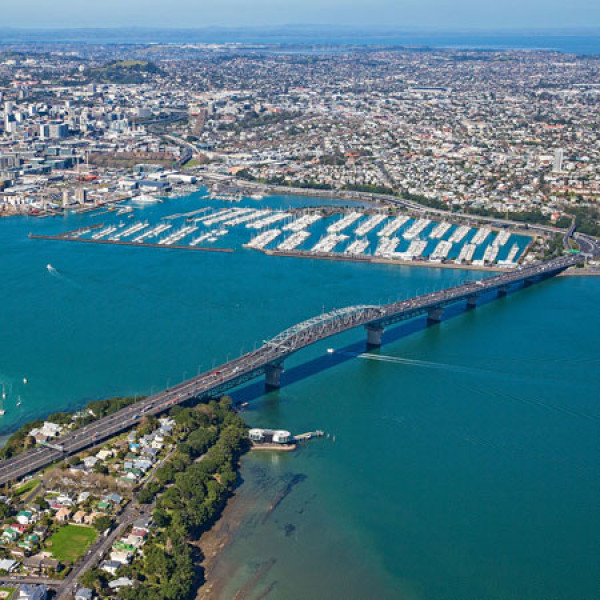
Waitematā Harbour Connections is a significant city-shaping project for Tāmaki Makaurau. It will provide for a well-connected, efficient transport system and greater long-term resilience of the wider transport network.
Waitematā Harbour Connections (WHC) is a significant long-term investment in the resilience and efficiency of our land transport system.
The Waitematā Harbour Connections corridor is a critical national, regional and inter-regional connection in our transport system with the ageing Auckland Harbour Bridge forming part of the busiest section of State Highway 1.
This phase of work is looking at the short, medium and long-term options for more efficient and resilient movement of people, goods and services across Te Waitematā. The bridge and tunnel options being investigated will provide for a well-connected and efficient transport system, providing greater long-term resilience for the wider transport network, while reducing the current pressures on the aging Auckland Harbour Bridge.
Te Waitematā is a landscape steeped in layers of cultural, geological, ecological and social significance.
Culturally, Te Waitematā is a taonga to Ngā Iwi Mana Whenua o Tāmaki Makaurau as kaitiaki and is acknowledged as a living being, with its own mauri. Like all living things, it must be considered and cared for. Ngā Iwi Mana Whenua o Tāmaki Makaurau are working in partnership with Waka Kotahi to support the enhancement of the mauri and uphold the mana of Te Waitematā and the surrounding taiao through regenerative design.
Geologically, the rising and lowering moana has had significant impacts on the shape and characteristics of Te Waitematā. Approximately 25 million years ago, the area that is now Te Waitematā was covered by a shallow moana. Over time, sediment and volcanic activity created underlying rock formations and as the climate changed and the moana fluctuated, the coastline shifted and evolved. During the last glacial period, which ended approximately 10,000 years ago, the moana was much lower than it is today. As the climate warmed, glaciers melted, and the moana rose, Te Waitematā was flooded, and the coastline moved inland. This process caused the formation of estuaries and tidal mudflats.
Ecologically, Te Waitematā provides vital habitat for a diverse range of marine species and birdlife, including many endangered species. The tidal currents and nutrient-rich waters support a complex food chain. Te Waitematā is dominated by inter-tidal sand and mud flats with areas of fringing salt marsh and mangroves. These areas are home to a rich diversity of invertebrates that are a critical food source for a range of shorebirds and fish species. It is this ecological significance that contributes to the deep connection that Ngā Iwi Mana Whenua o Tāmaki Makaurau has with Te Waitematā.
Socially, the navigable channels and sheltered bays of Te Waitematā have supported centuries of navigation, fishing, gathering shellfish and extensive trade and industry. Throughout the last century this has led to significant degradation and negative impacts on the mauri of Te Waitematā.
In recent years, the moana has continued to rise due to climate change, with projections indicating that it will continue to rise in the future. This is likely to have significant impacts on Te Waitematā, including increased flooding and erosion, changes in water quality and temperature, and the potential loss of habitat for marine and coastal species.